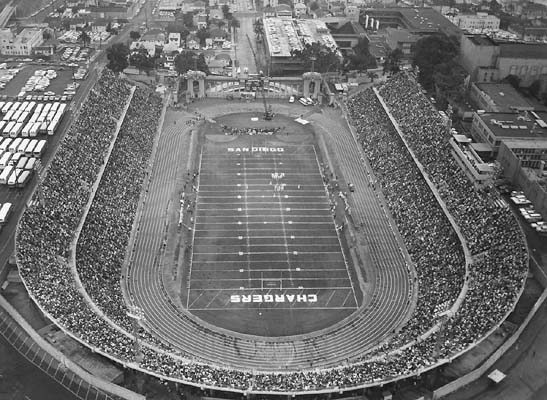Balboa Stadium’s days were numbered.
When construction was completed in 1915, the concrete horseshoe seating more than 23,000 was the largest municipally-owned stadium in the world, according to Don King, author of “Caver Conquest.”
The 1933 magnitude 6.3 earthquake that destroyed 230 school buildings in Southern California, including many at Long Beach Poly, resulted in the Field Act, government legislation that was specifically for schools in California.
The Field Act mandated that all pre-1930 buildings be demolished unless they were of earthquake resistant construction.
Since Balboa Stadium was owned by the City of San Diego, the edifice did not come under the Field Act.

But after San Diego Stadium opened in 1967, the city leased Balboa Stadium to the San Diego Unified School District, a move that put the aging facility in the crosshairs of the Field Act.
The hastily constructed second deck added in 1961 to accommodate the San Diego Chargers was found to be unsafe by earthquake standards.
By 1974 repairs allowed for use of Balboa for two years, but the extension ran out and major improvements, mostly to the second deck, were not made. Had there been no second deck , the stadium, anchored against a canyon, would have been useful for years.
A condemned Balboa Stadium soon would follow Russ Auditorium and many campus buildings and the gymnasium at San Diego High that were bulldozed beginning in 1973.
Gov. Brown’s office ruled that only the playing field could be put to use. The Stadium became dark on Friday nights this year as City schools played elsewhere.
Lights were turned on only once, when private schools St. Augustine and University met in the “Holy Bowl”.
The end was near.

The destruction of Balboa Stadium was a shameful act of civic vandalism. Removing the upper deck would have satisfied the earthquake safety codes. Why oh why did they have to demolish the iconic pillars at the south end of the field which gave the place some fine architectural character? The school board should have been ashamed. San Diego could make good use of a 23,000-seat stadium but sadly there just isn’t one.
i couldn’t have expressed this view any better.